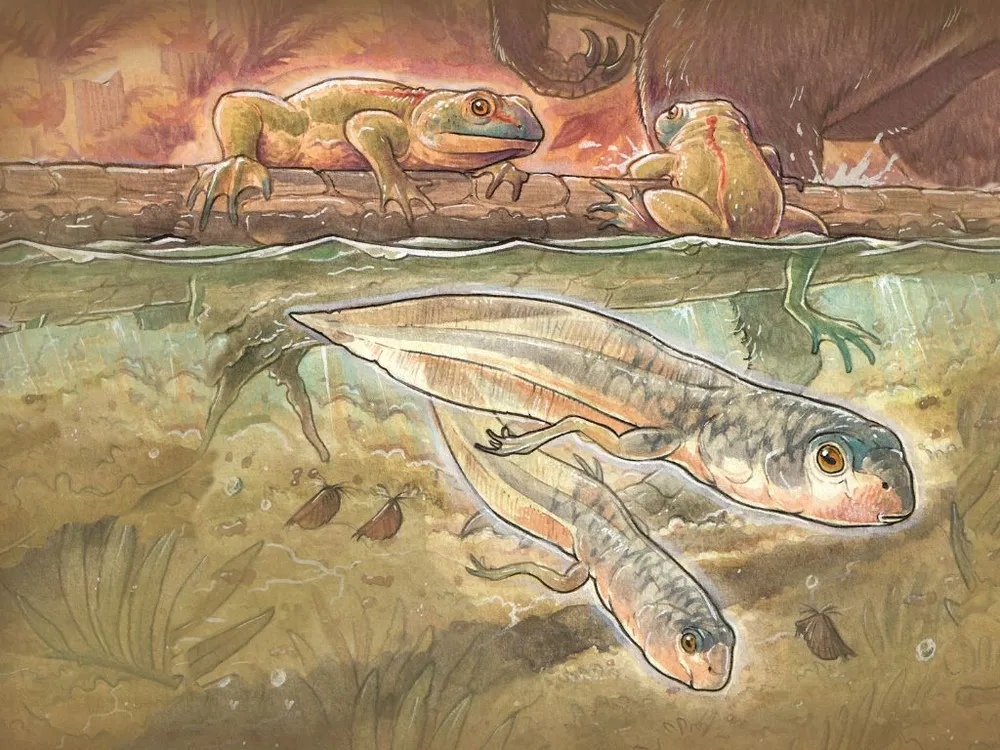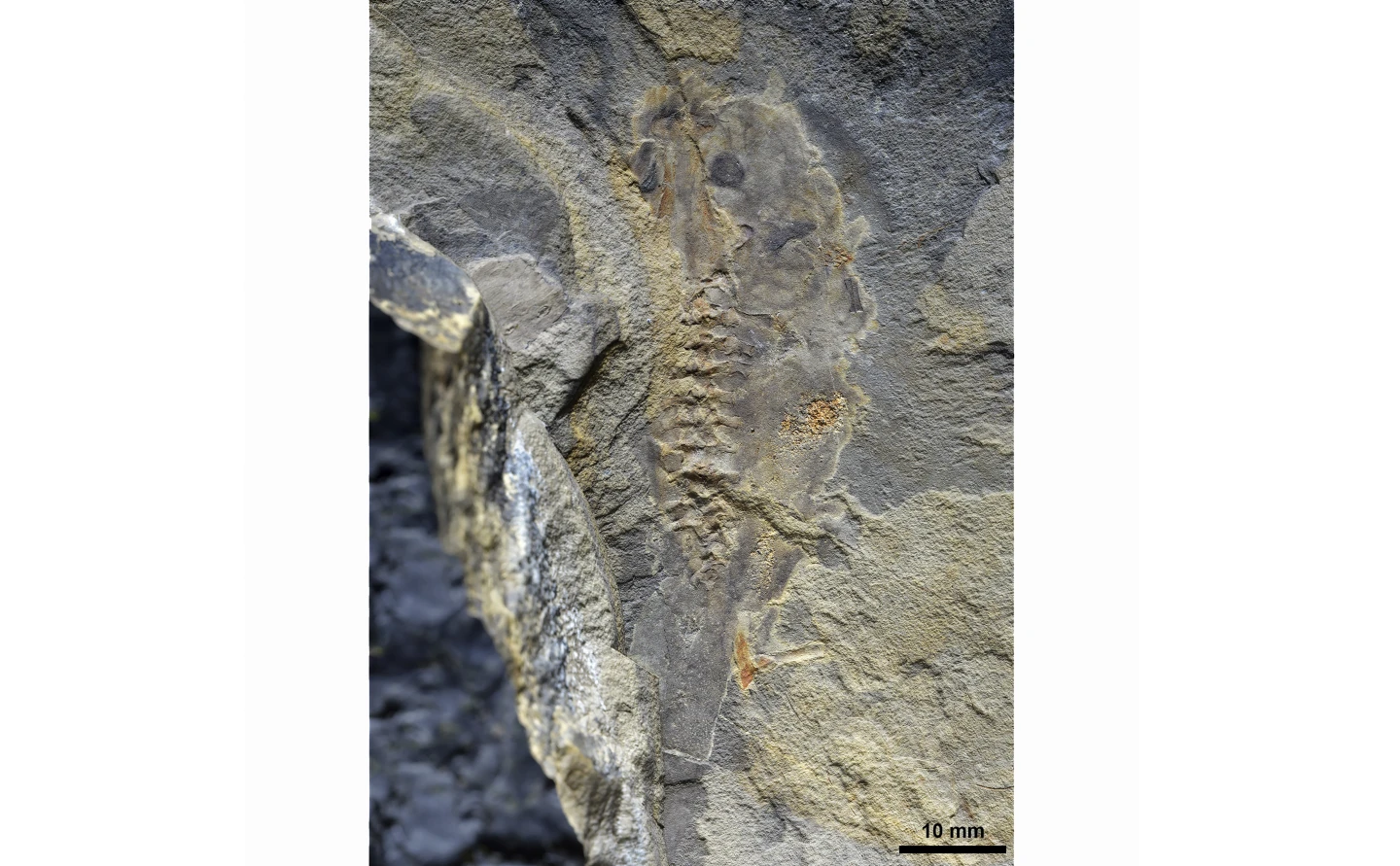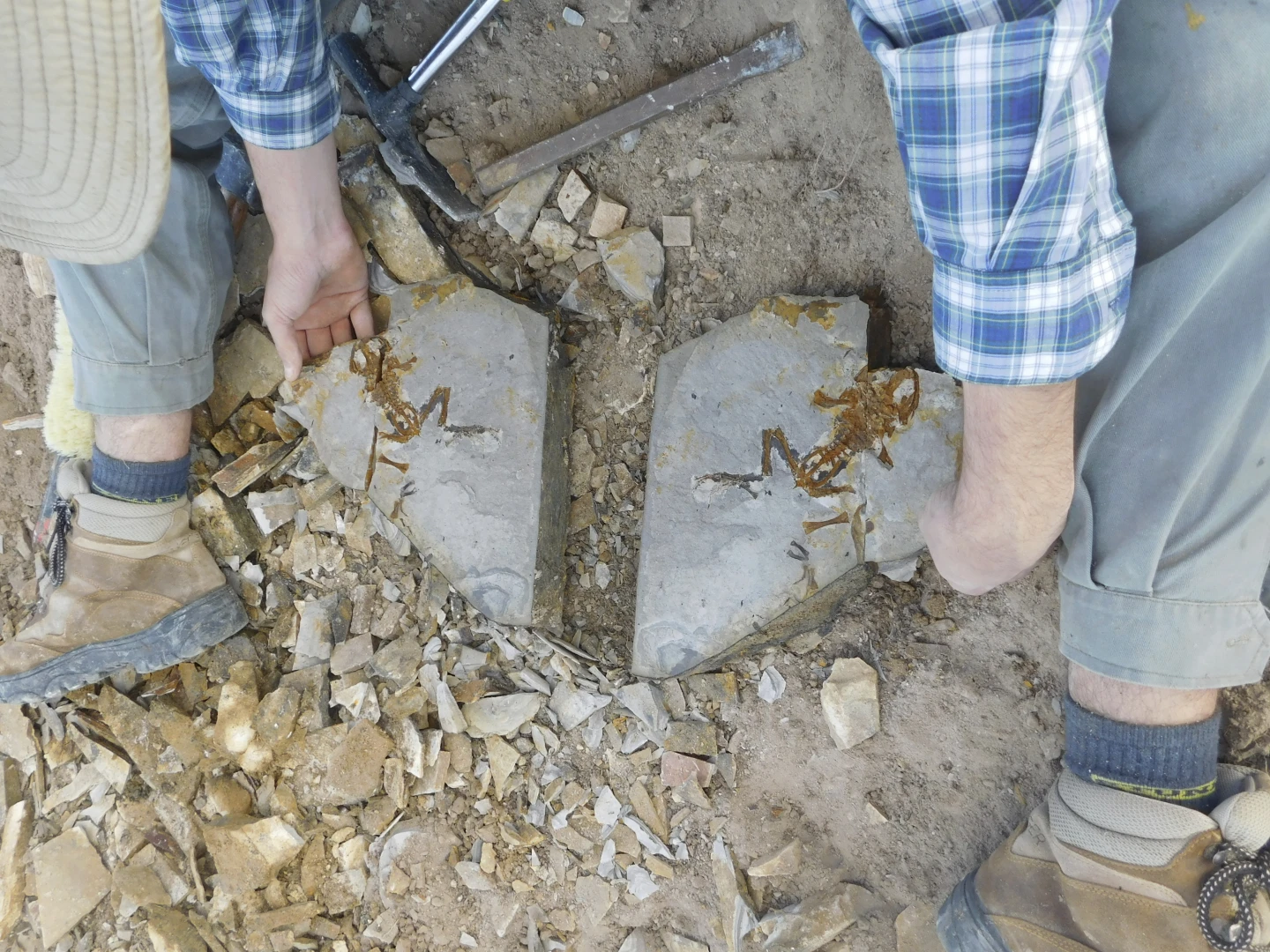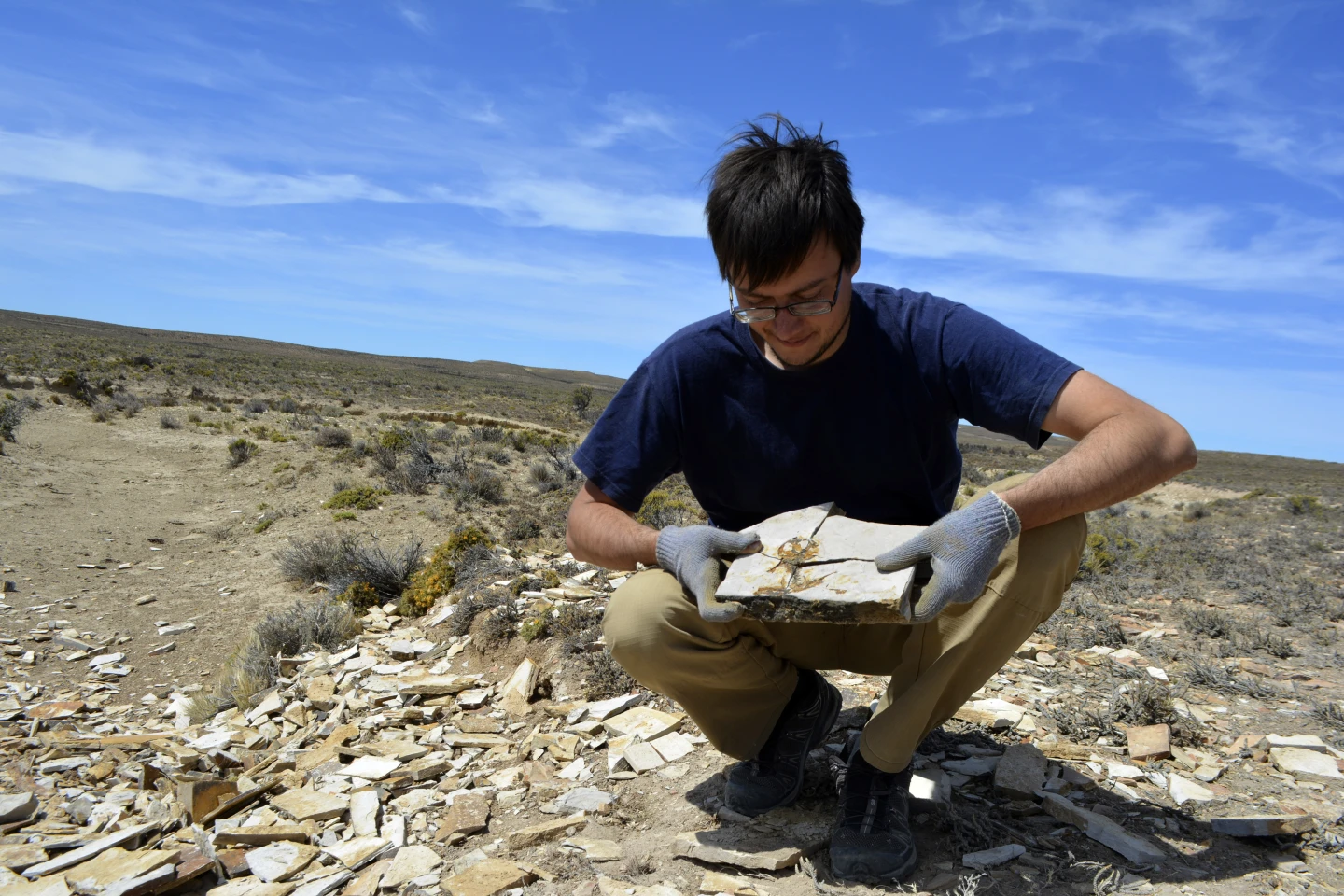Ancient tadpole fossil oldest ever discovered

An artist depicts the tadpole and frog individuals of the Notobatrachus degiustoi species. The oldest known tadpole fossil, which belongs to this species, was found in the Patagonia region of Argentina. Gabriel Lío
View article citation at Nature (must have access to download).
View pdf of article from Nature (provided by publisher for viewing).
Follow link to see detailed photos of the tadpole fossil and phylogenetic affinities of the Notobatrachus degiustoi tadpole (includes Xenopus laevis).
Listen to the story at NPR.
https://www.npr.org/2024/11/01/1211596949/giant-tadpole-frog-fossil-science
Read news article at Smithsonian Magazine.
Read news article at AP News.
https://apnews.com/article/tadpole-frog-fossil-amphibian-evolution-e59f5b95d2e35ff6d66b3bd2c4304ed4
This ancient tadpole fossil is the oldest ever discovered
By ADITHI RAMAKRISHNAN
Updated 12:00 PM EST, October 30, 2024
NEW YORK (AP) — Scientists have discovered the oldest-known fossil of a giant tadpole that wriggled around over 160 million years ago.
The new fossil, found in Argentina, surpasses the previous ancient record holder by about 20 million years.
Imprinted in a slab of sandstone are parts of the tadpole’s skull and backbone, along with impressions of its eyes and nerves.
“It’s not only the oldest tadpole known, but also the most exquisitely preserved,” said study author Mariana Chuliver, a biologist at Buenos Aires’ Maimonides University.
Researchers know frogs were hopping around as far back as 217 million years ago. But exactly how and when they evolved to begin as tadpoles remains unclear.
This new discovery adds some clarity to that timeline. At about a half foot (16 centimeters) long, the tadpole is a younger version of an extinct giant frog.
“It’s starting to help narrow the timeframe in which a frog becomes a frog,” said Ben Kligman, a paleontologist at the Smithsonian National Museum of Natural History who was not involved with the research.
The results were published Wednesday in the journal Nature.
The fossil is strikingly similar to the tadpoles of today — even containing remnants of a gill scaffold system that modern-day tadpoles use to sift food particles from water.
That means the amphibians’ survival strategy has stayed tried and true for millions of years, helping them outlast several mass extinctions, Kligman said.
___
The Associated Press Health and Science Department receives support from the Howard Hughes Medical Institute’s Science and Educational Media Group. The AP is solely responsible for all content.
ADITHI RAMAKRISHNAN
Ramakrishnan is a science reporter for The Associated Press, based in New York. She covers research and new developments related to space, early human history and more.

This image provided by Mariana Chuliver shows the oldes-known tadpole fossil found in Patagonia, Argentina. (Mariana Chulaver via AP)

This image provided by Mariana Chuliver shows paleontologist Matias Motta at the Fossil site "Estancia La Matilde" in Patagonia, Argentina showing and adult specimen of the fossil frog Notobatrachus degiustoi. (Mariana Chulaver via AP)

This image provided by Mariana Chuliver shows paleontologist Matias Motta at the Fossil site "Estancia La Matilde" in Patagonia, Argentina showing and adult specimen of the fossil frog Notobatrachus degiustoi. (Mariana Chulaver via AP)
